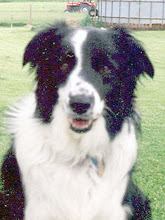What is your view of lambing season?
This:
Or this (video of lambing simulator and what can go wrong).
When we bought sheep 15 years ago, my lambing knowledge came from oral stories and books.
The oral stories mostly consisted of freezing nights in barns assisting ewes with births; one friend told of weak newborn lambs falling into water buckets and drowning.
The books weren't much more optimistic. They illustrated the many wrong ways a lamb could try and enter this world, and all the ways lambs and sheep can die.
"It's amazing any lambs live," my husband said.
Needless to say, I was pretty apprehensive about that first lambing season.
But during the first lambing season, we didn't experience that. The ewes often gave birth in the night, and we walked into the barn to find a ewe with her newborn lambs. It was a few years before we actually witnessed a birth or had to assist a ewe.
Over the years, we've had a few bad births. I've pulled a few lambs. We've had stillborn lambs and one or two deformed lambs. This may happen about 5 percent of the time. What usually happens, though, is that the ewe gives birth to twins or triplets, cleans them off and encourages them to nurse.
But, I'm all for learning more about sheep and lambing season. So last week, we watched the Ohio State University's lambing webinar. Again, we learned of what can go wrong, and how we can assist a ewe. (The video of the lambing simulator is well done).
I now have a re-stocked lambing first aid kit and have just the right amount of optimism and apprehension to start lambing season.



















